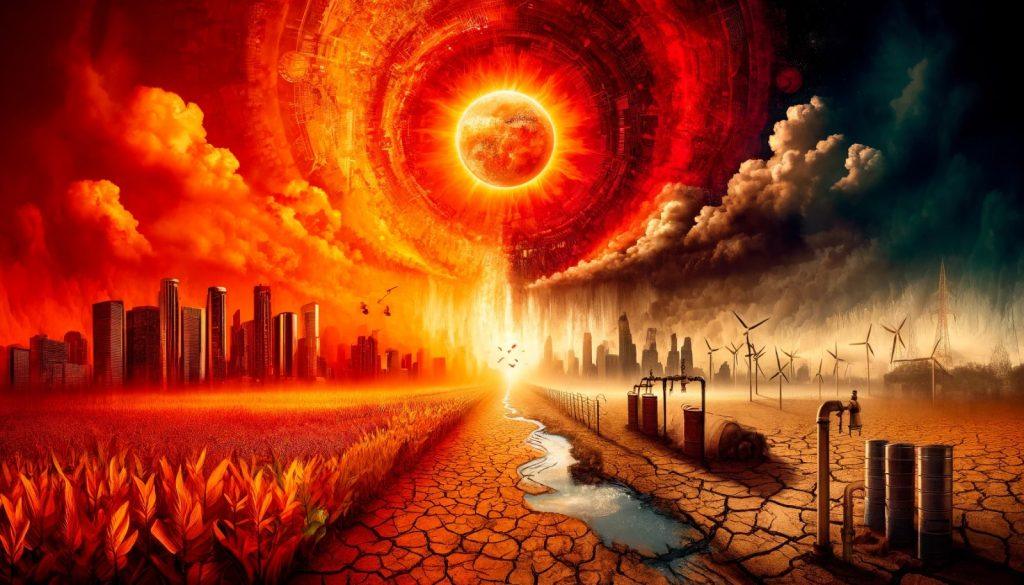How Heat Waves Are Transforming India’s Climate
Summer in India has been abnormally hot this year and will continue to be so till June 2024. In fact, year after year, India’s climate is increasingly punctuated by severe heat waves, each leaving a trail of hardship and loss. These thermal anomalies, named for their intensity and impact, have etched themselves into the nation’s collective consciousness.
Here, we discuss the SIX of the most severe heat waves that have ravaged India, exploring their consequences and extracting lessons for a future that is likely to witness an escalation in such events.
Summer 2024: Record-Breaking Heat
Several Indian cities are experiencing extreme heat, with temperatures soaring to unprecedented levels. The India Meteorological Department (IMD) predicts that El Niño conditions will continue at least until May 2024, contributing to the intense heatwaves. Provisional records in Delhi have reached 52.3°C, prompting health warnings and measures to cope with the extreme weather conditions. This heat wave has severely impacted the nation’s infrastructure and socio-economic stability, straining power grids, depleting water resources, and threatening food security.
Early Summer 2022: India’s Hottest March in 122 Years
In 2022, India experienced its hottest March in 122 years. Rajasthan, Madhya Pradesh, Himachal Pradesh, Gujarat, and Haryana faced the brunt of this heat wave, with Rajasthan recording 39 heat wave days. The relentless heat strained power grids to their limits, led to frequent and prolonged outages, and exacerbated water scarcity challenges. The agricultural sector faced severe setbacks due to the heat’s impact on crop yields and livestock, threatening food security and livelihoods.
2019: Churu’s Extreme Heat
In 2019, Rajasthan’s Churu district hit a staggering 50.8°C. This intense heat waves also impacted states like Madhya Pradesh, Uttar Pradesh, and Maharashtra, with Bihar reporting 184 deaths due to the extreme temperatures. The urban landscape experienced increased stress, leading to a decline in the quality of living, and the heat waves accelerated environmental degradation, contributing to higher levels of dust and ozone, and intensifying air pollution.
2016: Phalodi’s National Record
The Phalodi heat wave of 2016 set a national record with temperatures reaching a scorching 51.0°C in Rajasthan. This heat wave affected vast regions of the country, including Bihar, Jharkhand, Gangetic West Bengal, Odisha, Punjab, Haryana, Chandigarh & Delhi, Rajasthan, Maharashtra, West Madhya Pradesh, and Gujarat. These events highlighted the urgent need for a robust, multi-faceted response to safeguard India against the multifarious impacts of extreme temperatures.
2015: Deadliest Heat Wave
The Indian heat wave of 2015 stands as one of the deadliest, with Andhra Pradesh and Telangana facing the highest casualties. The death toll exceeded 1,735 in Andhra Pradesh and 585 in Telangana, while the eastern states of West Bengal and Odisha also grappled with significant impacts. The relentless heat led to widespread health crises and significant socio-economic disruptions.
2002: Andhra’s Scorching Phenomenon
The Andhra heat wave of 2002 was a scorching phenomenon that led to the demise of over 1,000 individuals. The districts of East Godavari, Prakasam, and West Godavari were among the hardest hit, with temperatures peaking at 49°C. This heatwave also reached the northern states of Punjab and Haryana, bringing with it a sweltering blanket of heat.
1998: Odisha’s ‘Killer Heatwave’
The Odisha heat wave of 1998, infamously dubbed the ‘Killer Heatwave,’ was a devastating event that claimed over 2,500 lives. Temperatures soared to an unprecedented 49.5°C, with Odisha enduring the worst of this calamity. The heat wave also extended its fiery clutches to Bihar, West Bengal, Andhra Pradesh, Uttar Pradesh, Maharashtra, and Gujarat, leaving a trail of destruction in its wake.
Prolonged Dry Spells Threaten Agriculture Across India
Such prolonged dry spells in the coffee districts of India is set to adversely impact next year’s crop starting in October. In Jammu and Kashmir, the dry spell is casting a shadow over critical sectors such as power generation, the fruit industry, and winter tourism. Fruit growers in the region face an unusual challenge as the prolonged dry spell replaces the traditional snowy weather. The dryness not only affects the apples but also invites the invasion of mice, which damage roots and destroy orchards.
Similarly, agriculture is deeply impacted in most North Indian states. The dearth of strong western disturbances, a crucial winter rain provider for Northern India, largely explains the situation. The chilly fog persists in the absence of these disturbances and their resultant wind shift. The Tea Research Association (TRA) estimates a 35-40 per cent decline in tea crops in North Bengal in February and March. According to secretary of TRA, “Upper Assam is about 40 per cent down. In the rest of Assam, the shortage is around 20-25 per cent”.
Conclusion
The repercussions of such India’s heat waves year after year extend far beyond the immediate health crises, casting long shadows over the nation’s infrastructure and socio-economic stability. The relentless heat has strained power grids to their limits, led to frequent and prolonged outages, depleted water resources, and threatened food security. The urban landscape has experienced increased stress, and environmental degradation has accelerated. These events have laid bare the urgent need for a robust, multi-faceted response to safeguard India against the multifarious impacts of extreme temperatures.


